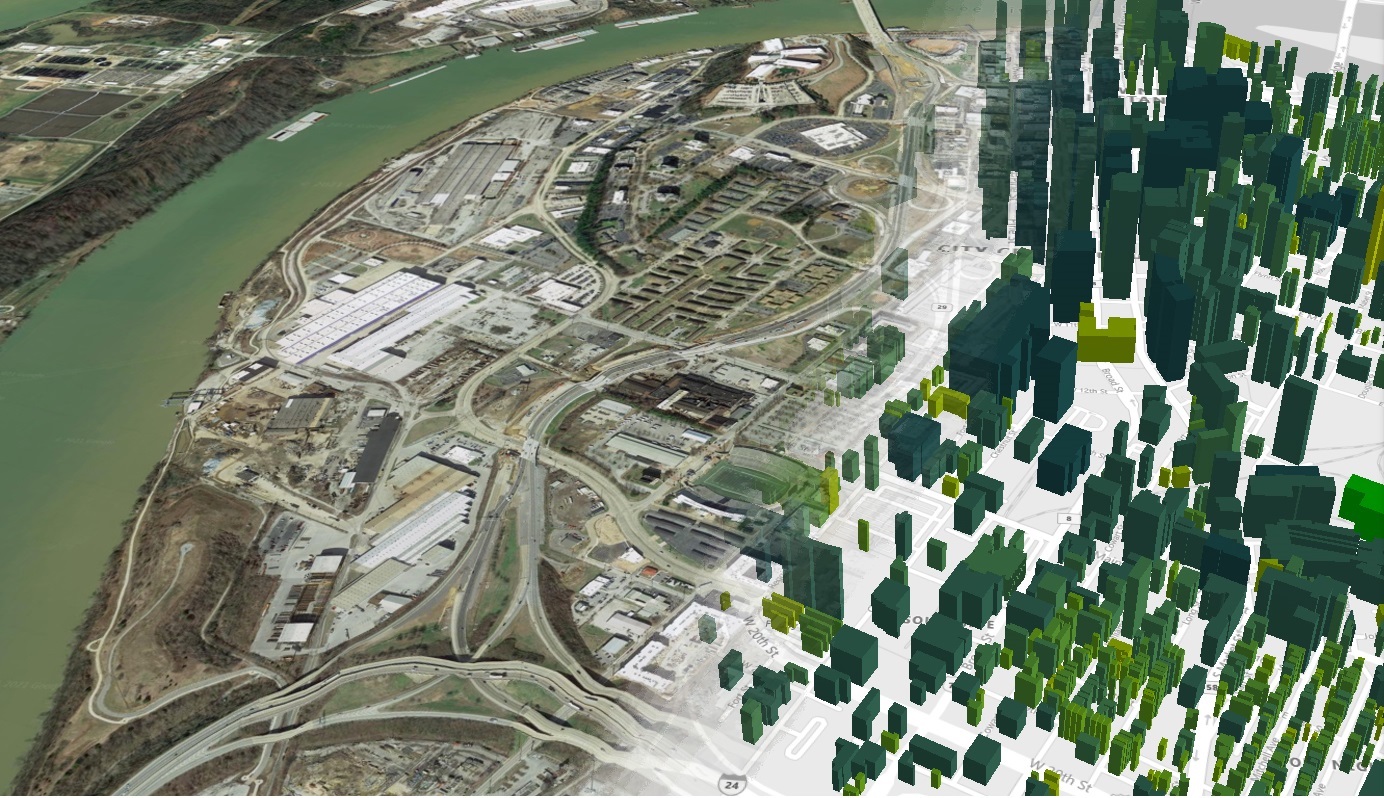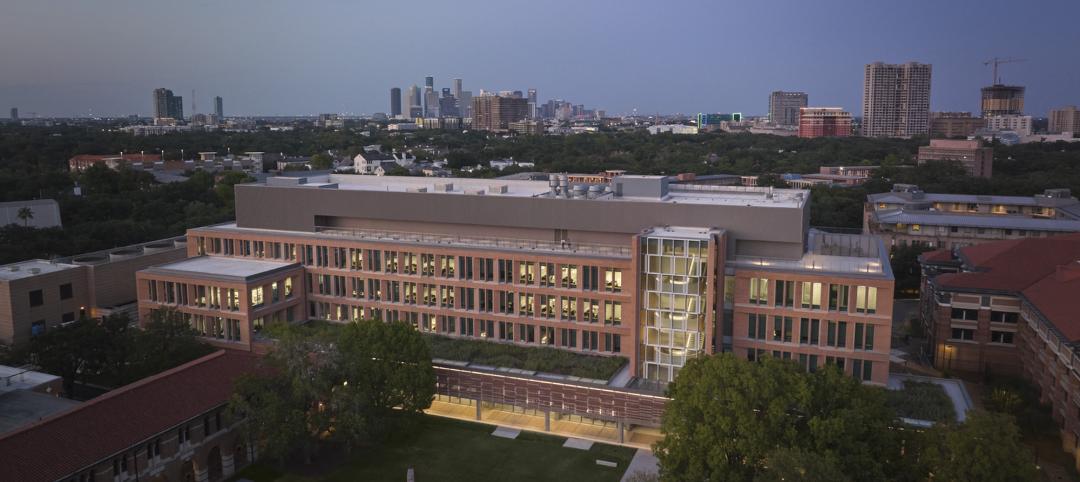Within the next five years, the AE firm SmithGroup wants to be able to incorporate the highest level of energy efficiency into every project it designs and builds. But the challenge is selecting the right energy model from literally thousands of options.
“The number of buildings we need to touch, and the pace we need to do it, exceed what an individual could do in a lifetime,” says Stet Sanborn, engineering lead in SmithGroup’s San Francisco office.
To speed this process, SmithGroup has partnered with the U.S. Department of Energy’s Oak Ridge National Laboratory (ORNL), whose Automated Building Energy Modeling software suite, better known as AutoBEM, has simulated the energy use of 123 million structures, or 98 percent of U.S. Buildings.
AutoBEM was developed using high-performance computing to process layers of imaging data with information about each building, such as its size, use, construction materials, and HVAC technologies. The goal was to create a digital twin of the nation’s buildings, says Joshua New, ORNL’s project leader.
Sanborn tells BD+C that SmithGroup got involved with this technology collaboration project 18 months ago, after responding to the lab’s request for proposal. After six months of planning, SmithGroup provided information for every building type it handles, including climate zones, footprints, orientation, and envelope construction. The modeling also took into account lighting and HVAC variations.
This project generated more than 200,000 building iterations and 250,000 energy models. The computation, which took less than an hour to complete, was equal to the output of one employee working full time for 365 years.
Using AI to spot trends
AutoBEM’s information was used to train an artificial intelligence tool that will allow SmithGroup to pre-simulate the energy impact of every design possibility for any building.
Sanborn says that these data sets are still pretty rudimentary, so they should benefit from ORNL’s plans to update its information this year. “We’re looking for much better resolution, so we can eventually have real-time and predictive feedback,” he explains.
In 2023, SmithGroup plans to train the AI bots to spot trends and choose the best energy-efficient iteration for a given project. Sanborn says his team has already been surprised by how the data has highlighted “the interaction of things” like glass U-values and wall R-values. More refined data, he predicts, should make these data sets more accessible and actionable. (Sanborn says that SmithGroup already has pre-simulated climate data for every market it builds in.)
The first new designs for which this energy modeling is likely to be applied could be for a civic or higher education building, says Sanborn, where no restrictions to sharing information exist.
ORNL’s partners such as SmithGroup and Google—which is using AutoBEM to improve its free Environmental Insights Explorer tool—have committed to sharing data sets created by using AutoBEM. Some data sets have already been posted, and Sanborn thinks that open-source access is important because “SmithGroup can’t build every building, as much as we’d like to. We don’t want to hold a secret sauce or limit everyone’s ability to drive efficiency in response to what is really a climate emergency.”
SmithGroup participated in the funding of AutoBEM, whose development, expansion and collaborations are also funded by DOE’s Office of Electricity, the Energy Efficiency and Renewable Energy’s Building Technologies Office and the National Nuclear Security Administration. The research team leveraged supercomputing resources from Argonne National Laboratory.
Related Stories
University Buildings | Jan 18, 2024
Houston’s Rice University opens the largest research facility on its core campus
Designed by Skidmore, Owings & Merrill (SOM), the 251,400-sf building provides students and researchers with state-of-the-art laboratories, classrooms, offices, and a cafe, in addition to multiple gathering spaces.
Sustainability | Jan 10, 2024
New passive house partnership allows lower cost financing for developers
The new partnership between PACE Equity and Phius allows commercial passive house projects to be automatically eligible for CIRRUS Low Carbon financing.
Sustainability | Nov 1, 2023
Researchers create building air leakage detection system using a camera in real time
Researchers at the U.S. Department of Energy’s Oak Ridge National Laboratory have developed a system that uses a camera to detect air leakage from buildings in real time.
Government Buildings | Oct 23, 2023
Former munitions plant reimagined as net-zero federal workplace
The General Services Administration (GSA) has embraced adaptive reuse with Building 48, an exciting workplace project that sets new precedents for how the federal government will approach sustainable design.
Metals | Sep 11, 2023
Best practices guide for air leakage testing for metal building systems released
The Metal Building Manufacturers Association (MBMA) released a new guidebook, Metal Building Systems - Best Practices to Comply with Whole-Building Air Leakage Testing Requirements.
Regulations | Aug 23, 2023
Gas industry drops legal challenge to heat pump requirement in Washington building code
Gas and construction industry groups recently moved to dismiss a lawsuit they had filed to block new Washington state building codes that require heat pumps in new residential and commercial construction. The lawsuit contended that the codes harm the industry groups’ business, interfere with consumer energy choice, and don’t comply with federal law.
Green | Aug 7, 2023
Rooftop photovoltaic panels credited with propelling solar energy output to record high
Solar provided a record-high 7.3% of U.S. electrical generation in May, “driven in large part by growth in ‘estimated’ small-scale (e.g., rooftop) solar PV whose output increased by 25.6% and accounted for nearly a third (31.9%) of total solar production,” according to a report by the U.S. Energy Information Administration.
Government Buildings | Aug 7, 2023
Nearly $1 billion earmarked for energy efficiency upgrades to federal buildings
The U.S. General Services Administration (GSA) recently announced plans to use $975 million in Inflation Reduction Act funding for energy efficiency and clean energy upgrades to federal buildings across the country. The investment will impact about 40 million sf, or about 20% of GSA’s federal buildings portfolio.
Codes and Standards | Aug 7, 2023
Cambridge, Mass., requires net-zero emissions for some large buildings by 2035
The City of Cambridge, Mass., recently mandated that all non-residential buildings—including existing structures—larger than 100,000 sf meet a net-zero emissions requirement by 2035.
Multifamily Housing | Jul 31, 2023
6 multifamily housing projects win 2023 LEED Homes Awards
The 2023 LEED Homes Awards winners in the multifamily space represent green, LEED-certified buildings designed to provide clean indoor air and reduced energy consumption.

















